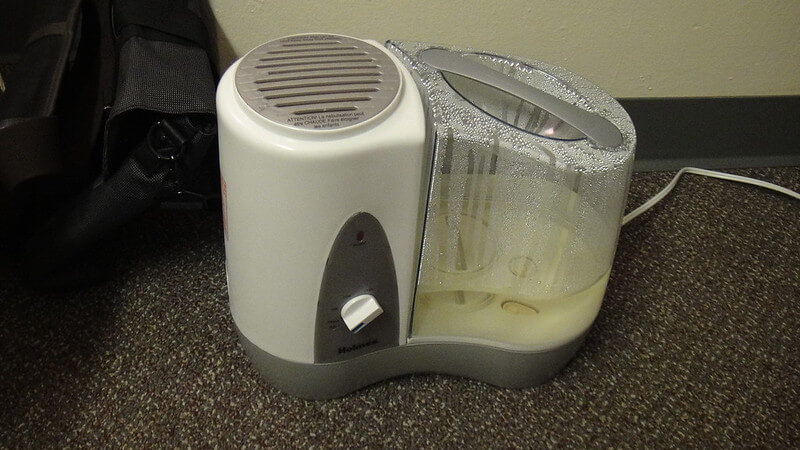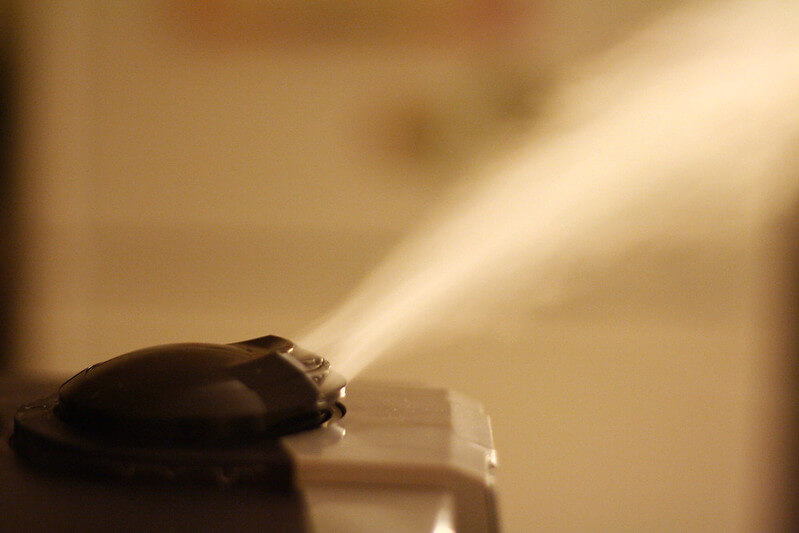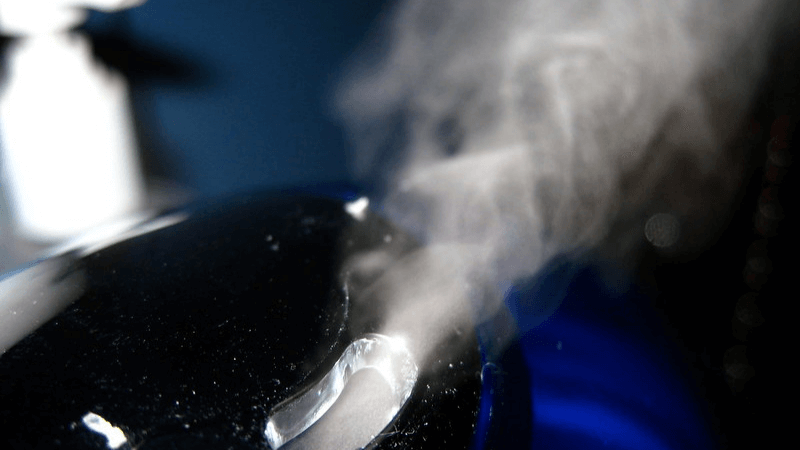Humidifiers add moisture to the air, which can help ease everything from dry skin to chapped lips and reduce an uptick of cold and flu cases during the cold and dry winter air. Humidifiers come in different sizes and shapes. However, they can broadly be classified under cool mist and warm mist humidifiers.
While both cool mist and warm mist humidifiers add moisture to the air, these two types of humidifiers operate differently. Because of this, it is important to understand the differences and, depending on your preferences, make an informative decision on which one is right for you.
Cool Mist Humidifiers
Cool mist humidifiers release a cool room-temperature mist through various technologies. Generally, cool mist humidifiers use a fan to evaporate water into a room. Cool mist humidifiers can be categorized under evaporative and ultrasonic cool mist humidifiers.
Evaporative humidifiers have been around for a while. These humidifiers work by utilizing the most basic way of humidifying a room where you place a pot or bowl of water and allow moisture to evaporate into the air naturally. In the case of evaporative humidifiers, a fan is used to speed up things. The fan draws in air and blows it through a moist wick filter. As the air passes through the wick filter, water evaporates into vapor and is released from the humidifier as a cool mist.

Ultrasonic humidifiers use a piezoelectric transducer or ceramic diaphragm that oscillates to create high-frequency sound vibrations that break water molecules into a fine mist. Ultrasonic humidifiers are more popular than evaporative humidifiers because they are quiet and more efficient in humidifying a room.
Benefits of Cool Mist Humidifiers
- Cool mist dehumidifiers use less electricity. Because they do not heat the water before it is dispersed, these humidifiers are generally more economical to run.
- They are safe to use. Cool mist humidifiers are safer because there is no hot water present. This makes them safer to use around children and pets without worrying about scalding water accidents. This is why cool mist humidifiers are popular in children’s nurseries and bedrooms compared to warm mist humidifiers.
Drawbacks of Cool Mist Humidifiers
- Bacteria & mold growth. One major disadvantage of cool mist humidifiers is they are more likely to grow bacteria and mold. For evaporative humidifiers, the wick can trap and encourage the growth of bacteria and mold, which can be spread around when humidifying. The wick should be cleaned or replaced regularly to keep the humidifier running optimally.
- White dust. For ultrasonic humidifiers, white dust is the main problem. This is because ultrasonic humidifiers do not have filters. When mist lands and dries on a surface, it can leave dried mineral deposits or white dust. White dust can be problematic for some people with allergies, asthma, or other respiratory health conditions. Using distilled water and purchasing a demineralization cartridge can help with white dust.
Warm Mist Humidifiers
Warm mist humidifiers use a heating element that boils water inside the humidifier before releasing the hot steam into the air. Warm mist humidifiers are considered healthier because water boiling eliminates most waterborne bacteria and mold. Warm mist dehumidifiers also do not use a fan. Thus they are quiet than cool mist humidifiers.

Benefits of Warm Mist Humidifiers
- Reduction of Bacteria and other waterborne germs. Boiling water can help kill harmful bacteria and other waterborne contaminants. However, you should use distilled water that does not have minerals because boiling will not eliminate them.
- Quiet operation. One of the major advantages of warm mist over cool humidifiers is the quiet operation. This is because, unlike cool mist humidifiers, they do not use a fan to work.
- Warms the air a little. During the cold seasons, keeping your home warm is a challenge. A warm mist humidifier can help slightly heat a room through the warm steam generated. Though they are not efficient at warming up your home like space heaters, they can slightly help improve the warmth of your home.
Drawbacks of Warm Mist Humidifiers
- Hot steam can be dangerous. Safety is a top concern when using a warm mist humidifier. Because these units can get hot, accidents can happen when they topple/fall over. If you have children in your home, keeping a warm mist humidifier away from their reach or opting for a cool-mist humidifier is advised.
- High electricity consumption. Heating water uses more energy than operating a fan. For this reason, warm mist humidifiers use more electricity than cool mist humidifiers. While the consumption is not huge, cool mist humidifiers are your best choice if you’re concerned with saving energy.

Cool Mist Vs. Warm Mist Humidifiers
For Babies and Children
Because of safety concerns, going with a cool-mist humidifier if you have a toddler or curious children moving around the home is the best option. Warm mist humidifiers present the risk of scalding for toddlers and small children, but even adults may accidentally spill hot water and burn themselves. Read more about humidifiers and babies.
For Coughs
According to Mayoclinic, though more research is needed, cool mist humidifiers can help ease coughing and congestion due to a cold. This is most likely because dryness can make it hard for mucous to blow out or cough up. However, there is no good evidence to support these claims.
For Sinuses
Warm mist humidifiers are best for blocked sinuses and breathing passages. This is because warm air helps the passages relax and open so mucous can flow more easily. Some Warm mist humidifiers also include a chamber to add medication that can be dispersed into the air for healing. For your health and safety, do not use any medication without approval from your doctor.
Happy Humidifying
Proper hygiene remains essential whether you choose a warm or cool mist humidifier. Regular cleaning and maintenance of the water reservoir and filters should be done. You should also check your humidity or purchase a humidifier with a built-in humidistat to ensure you are not overdoing it. Too much humidity will also come with problems like mold and musty smells.

